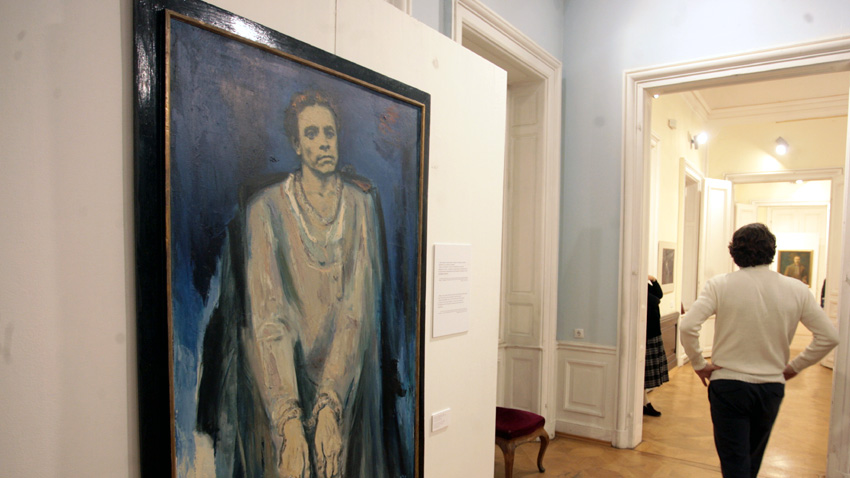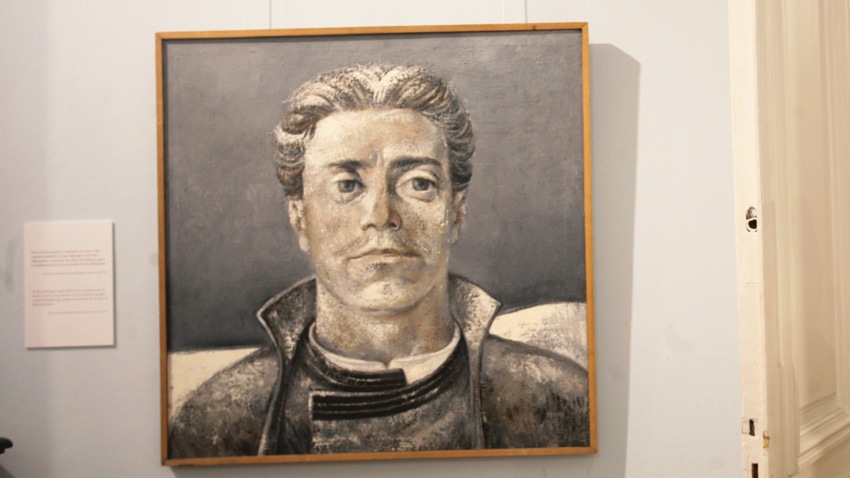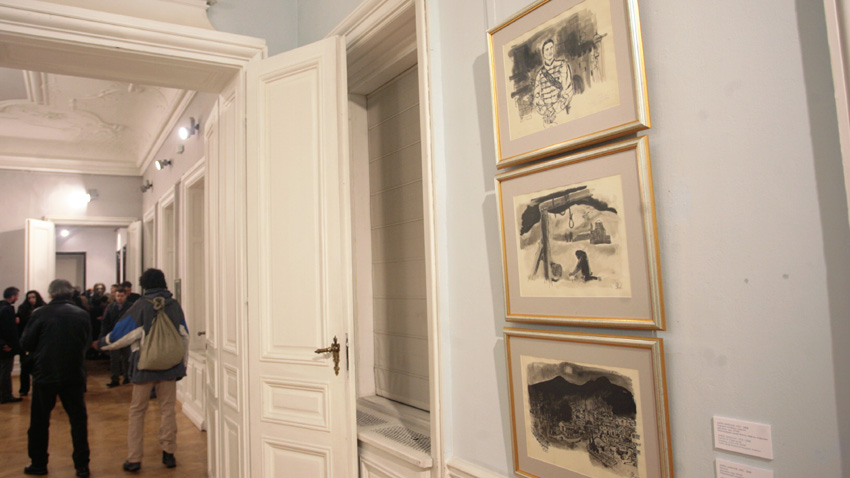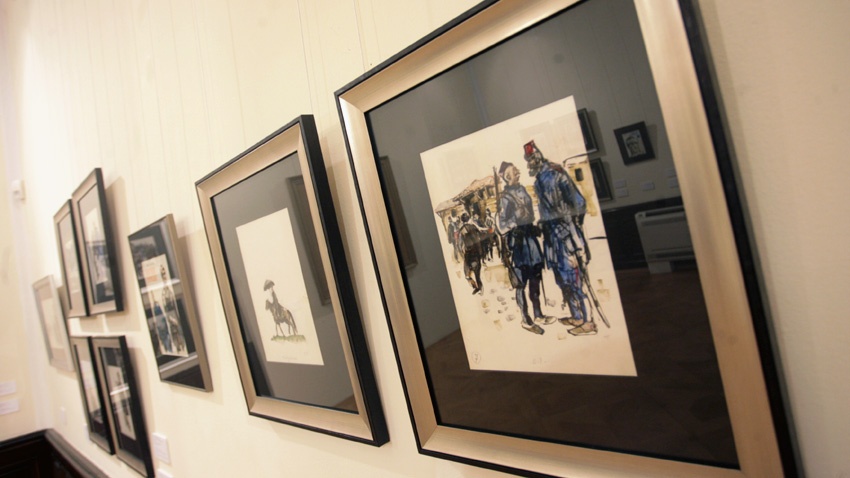2016 marks 143 years since the death of Vasil Levski (1837-1873), Bulgaria’s foremost national hero, ideologist and organizer of the national struggles for liberation from Ottoman domination. On the occasion of the anniversary an exhibition has opened at the initiative of the National Art Gallery – the Royal Palace in Sofia and the All-National Vasil Levski Committee. Under the title The Apostle and His Time in the Works of Bulgarian Artists the display features more than 80 artworks and 40 documents related to the personality, life and work of the Apostle of Freedom. They will remain on show at the former Royal Palace until 20 March. Most of the items have for the first time become accessible for wider audiences. These are mostly large paintings from the National Art Gallery archives recreating scenes from the life of Bulgarians during the second half of 19 c. Other items include graphical and sculpture portraits and compositions related to the life and work of Vasil Levski.

The exhibition presents an extensive panorama of artworks highlighting the image of the Apostle, and also acquaints viewers with artists from different generations and with different political affiliations who have been inspired by Levski’s life and especially by his efforts to organize a network of secret revolutionary committees in the Bulgarian lands”, explains curator Zhanet Miteva. “The earliest artist in the exhibition is Marin Ustagenov born in 1872, and one of the first graduates of the School of Painting that later emerged as the National Academy of Arts. The youngest artist is a sculptor from Tsanko Lavrenov School of Fine Art in Plovdiv. His name is Lazar Mitev and he was born in 1996.

A highlight in the display is the piece by Dechko Uzunov, A Necklace of Immortality, painted in 1973. Above-mentioned Marin Ustagenov dedicated most of his works to the pre-Liberation era and to the image of Vasil Levski. His painting Founding of a Secret Revolutionary Committee in the Region of Sofia is for the first time shown to viewers. A counterpoint to the works of old masters is the output of contemporary ones. These include the professor at the National Academy of Arts Plamen Vultchev and Vasil Goranov known in the European cultural circles. Rosen Raychev, a young artist based in USA, has made a portrait of Vasil Levski. He donated this portrait to the Bulgarian Presidency in 2010 and it is for the first time accessible for wider audiences. How has the image of the Apostle in art been changing in time?

During the time when the earliest artists worked knowledge of history was still scarce, and the personal interpretation of Vasil Levski was a leading factor. Ustagenov for instance, painted his images under direct influence from Levski’s contemporaries and associates. As time went by new evidence emerged as well as many historical studies. My impression is that all artists who worked in 20 c. regardless of what generation they belonged to, have carefully researched available historical books, novels and memoirs dealing with Vasil Levski and his time. Also, a few photographs of Levski surviving today are a further source of interpretation. Well, in any case physical resemblance is sought. Some artists depict Levski in official portraits, others – while he is setting up a secret revolutionary committee – a favorite subject of many painters. Other works reveal scenes of traditional life, various characters and landscapes from Sofia. One of the works shows St. Sophia Church in ruins, the way Levski saw it on his way to the gallows.

More from curator Zhanet Miteva:
There is a special section with illustrations of Hristo Neykov from two children’s books about Vasil Levski. One of them is The Apostle in Mishap based on the famous short story by Ivan Vazov, and the other by Serafim Severnyak, I am Levski. The books have reached thousands of Bulgarian children but now we are showing the original illustrations to them for the first time. They are arranged in a showcase with the first drawings created by Ivan Mrkvicka for The Apostle in Mishap published in 1895 in Art Journal. There are original photos of Levski associates as well as two photographs of him – they are only rarely shown to general audiences because they are kept under very strict control. We have the chance to show them after they have been provided by courtesy of Alexander Alexiev, a private collector.

The exhibition goes with a theater miniature by stage-director Asen Shopov – The Interrogation of Vasil Levski by the Extraordinary Investigative Commission in Sofia. It was staged amid the paintings and documents on the first two weekends after the opening of the exhibition. The part of the Apostle of Freedom was played by young actor Veselin Plachkov whom we saw last year starring in Dyakon Levski (Deacon Levski), a movie directed by Maxim Genchev.
The theater show revisits the forensic and investigativehearingsheld at the Sofia Police Office. In the same place the Royal Palace was built after the Liberation of Bulgaria. Today it hosts the National Art Gallery – The Palace. In this way the spirit of the Apostle still inhabits these historical premises, concludes curator Zhanet Miteva.
English Daniela Konstantinova
Photos: BGNES
In Northeastern Bulgaria the river Rusenski Lom and its tributaries – Cherni, Beli and Malki Lom – have carved out a rugged rocky landscape with hidden caves and hushed valleys where the only sound is that of the birdsong. People have settled in..
His Eminence Metropolitan Joseph, head of the Bulgarian Orthodox Church in the USA, Canada, and Australia, has blessed the newly elected Parish Council of the Holy Trinity Bulgarian Orthodox Church in Madison, Illinois. The new council was elected..
The revival of Bulgarian statehood after five centuries of Ottoman rule is connected with the April Uprising of 1876 and the Internal Revolutionary Organization previously created by Vasil Levski. After the Treaty of Berlin of 1878, the Bulgarians..
On 19 October 2025, the day on which Orthodox Bulgarians commemorate St Ivan Rilski the Miracle-Worker, the newly renovated St Ivan Rilski Church in Chicago..
Archaeologist Nikolay Ovcharov on Thursday announced the discovery of a large circular temple at Perperikon, the early-historic rock complex in the..

+359 2 9336 661
